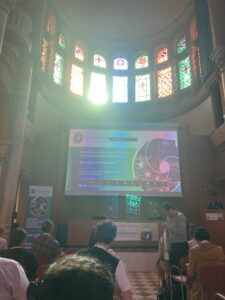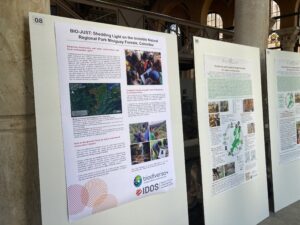At the May 2025 Biodiversa+ Science Fair in Barcelona, the BIO-JUST project showed how digital tools can understand environmental justice within Nature-based Solutions (NbS). The Mapping App, in particular, empowers local communities to understand and navigate the social impacts of conservation measures.

The Mapping App was presented at the “Novel Technologies Marketplace” by BIO-JUST, which explores the social dimensions of nature-based solutions (NbS) across Europe and South America. In Colombia, the project focuses on the Misiguay Forests Regional Natural Park—established in 2014 on privately owned campesino land in Santander. Paradoxically, the park was created to preserve forest ecosystems that local communities had long safeguarded through their own stewardship. Yet, these very landowners were largely excluded from the park’s designation process—raising pressing concerns around environmental justice, recognition, procedural fairness, and the respect for local rights.

At the request of local communities, BIO-JUST developed a geospatial mapping tool using Avenza Maps. The app integrates official land registry data, Google terrain maps, and protected area boundaries. Co-designed with a local topographer, it allows residents to visualise how property lines intersect with the park—using a mobile phone and free of charge.
The tool revealed how conservation burdens (e.g., land use restrictions) were distributed and who lived within the protected area. Interviews with affected residents uncovered deep concerns about procedural and recognition justice. Importantly, local youth were trained in using the app, promoting digital literacy and community engagement.
The app continues to be used today—not only by local families but also by public authorities for land and inheritance procedures. BIO-JUST offers a powerful example of how inclusive technologies can advance socially just conservation and more equitable NbS outcomes.
For more on the BIO-JUST project, click here. Or here, if you wish to see a documentary of the Colombian case study.

Schreibe einen Kommentar